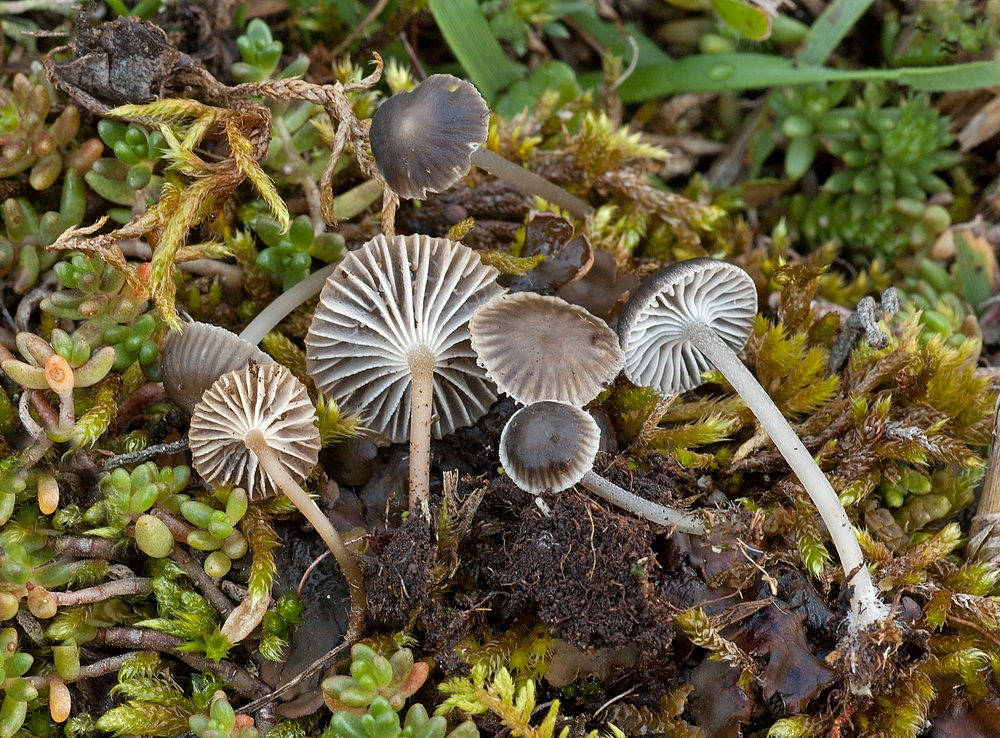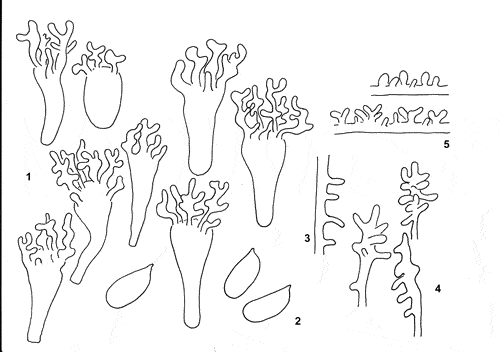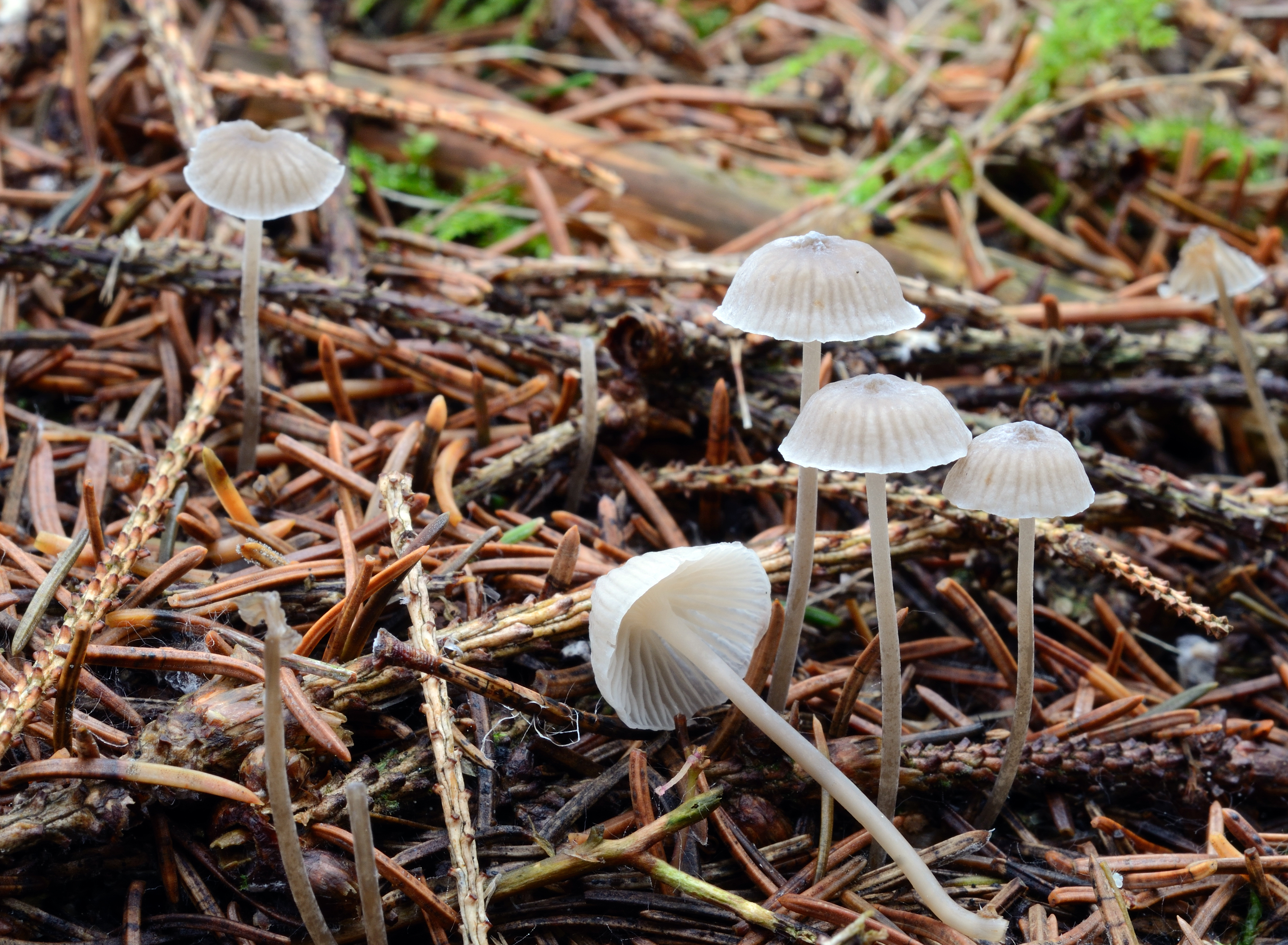Mycena pseudopicta
Mycena pseudopicta
Description
1. Cheilocystidia, 2. Spores, 3. Hypha of the cortical layer of the stem, 4. Caulocystidia, 5. Hyphae of the pileipellis.
Cap 5-15 mm, hemispherical to plano-convex, with age becoming somewhat depressed or broadly umbonate, not or little sulcate, translucent-striate, delicately pruinose at first, glabrescent, slightly lubricous when moist, hygrophanous, dark sepia brown to grey brown. Gills 12-20 reaching the stem, broadly adnate and quite deeply decurrent, grey, the edge whitish. Stem 15-40 x 0.5-1.5 mm, firm, cylindrical, equal, pruinose, glabrescent for the greater part, slightly lubricous when moist, grey above, pale brown below, the base often slightly bulbous and covered with long, coarse, whitish fibrils. Odour none (also said to be raphanoid when crushed). Taste none or raphanoid or somewhat bitter, not farinaceous. Basidia 25-35 x 8-9 µm, clavate, 2-spored, with sterigmata up to 8 µm long. Spores 10.6-13(-14) x 5-6.5(-7.2) µm, Q=1.8-2.5, Qav ˜ 2.1, pip-shaped to almost cylindrical, amyloid. Cheilocystidia 21-32 x 5-12 µm, forming a sterile band, clavate to more or less irregularly shaped, covered with few to fairly numerous, unevenly spaced, often very coarse, simple to branched, flexuous to curved excrescences 2-15 x 1-4 µm. Pleurocystidia absent. Lamellar trama dextrinoid. Hyphae of the pileipellis 2-4.5 wide, smooth to densely covered with excrescences 1.5-8 x 1-2 µm, tending to become somewhat gelatinized. Hyphae of the cortical layer of the stem 1.5-3.5 µm wide, smooth to sparsely covered with straight to curved, cylindrical excrescences 1-7 x 1-2 µm, the terminal cells 2.5-7 µm wide, cylindrical to clavate, variously diverticulate, tending to be somewhat gelatinized. Clamps absent.
Ecology and distribution
Solitary or in small groups among mosses and lichens and low shrubs (e.g. Salix repens, but also Juniperus communis) on (always calcareous?) sand. Not yet found in Norway.


